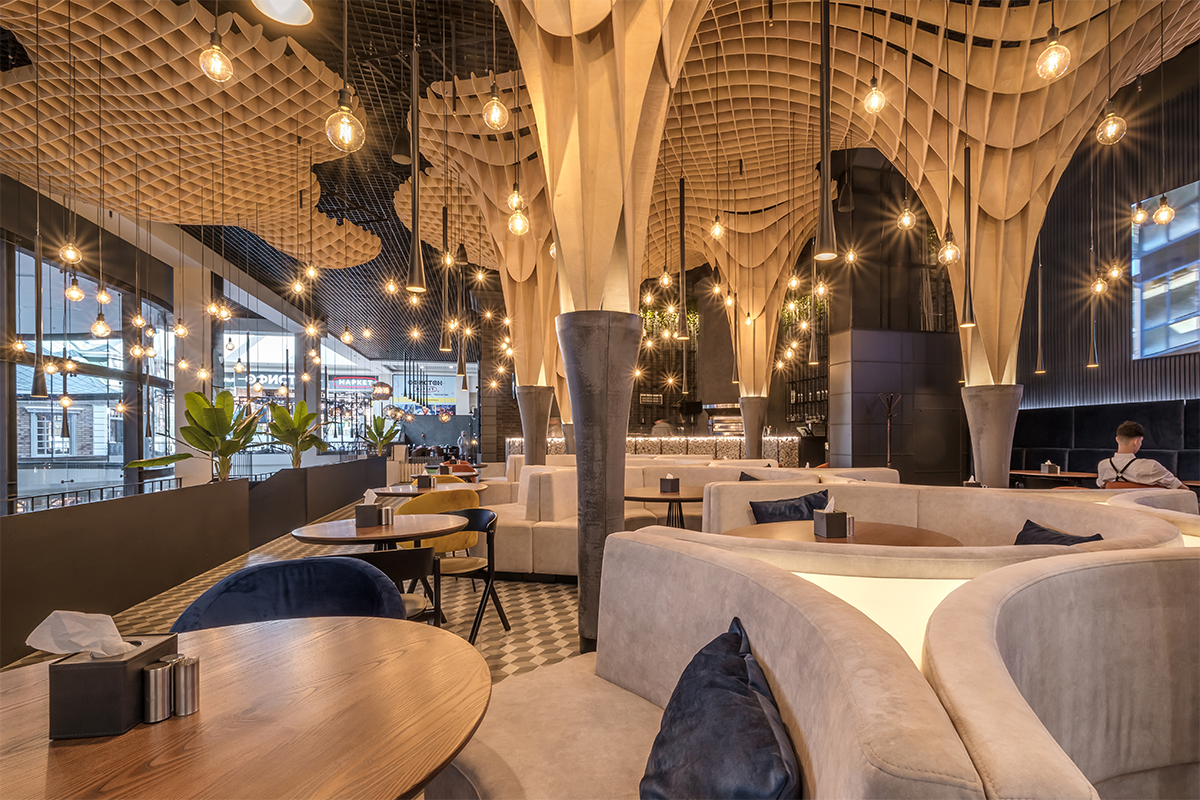Asian Restaurant ISB: A Must-Try Spot for Food Lovers in Islamabad
Asian Restaurant ISB: A Must-Try Spot for Food Lovers in Islamabad
Blog Article
Savor Genuine Asian Cuisine With a Pan-Asian Spin for a Culinary Journey
Embarking on a cooking journey through authentic Eastern cuisine, enhanced with a Pan-Asian spin, uses an one-of-a-kind possibility to explore the abundant tapestry of tastes that specify the area's varied cooking customs. This experience invites you to appreciate the exquisite equilibrium of preferences-- wonderful, salted, spicy, and sour-- harmonized by aromatic herbs and spices. Imagine the innovative blend of Thai curry and ramen or the unforeseen pleasure of sushi burritos. As you consider these luring meals, consider the social narratives and historical influences that shape them, each bite providing a story waiting to be uncovered.

Discovering Pan-Asian Tastes
In the realm of global gastronomy, Pan-Asian cuisine sticks out for its remarkable diversity and the harmonious interaction of tastes from numerous Asian cultures. This cooking technique commemorates the one-of-a-kind components and abundant practices discovered throughout the continent, producing a tapestry of tastes that is both satisfying and intriguing. Key to Pan-Asian food is its capacity to stabilize different flavors-- pleasant, salty, spicy, and sour-- while highlighting the freshness and quality of each active ingredient.
From the umami-rich soy sauce of Japan to the fiery chili peppers of Thailand, Pan-Asian food offers a substantial combination of tastes. These components are often combined in innovative ways, improving recipes with layers of complexity. For example, making use of aromatic herbs such as lemongrass and cilantro, common in Vietnamese and Thai food, adds a rejuvenating brightness to dishes, while the consolidation of coconut milk supplies a luscious, abundant structure.
The focus on fresh produce and aromatic flavors guarantees that each dish is not only a feast for the preference buds but also for the senses. Pan-Asian cuisine invites diners to embark on a cooking journey, checking out the substantial and differed landscapes of Oriental gastronomy with every bite.
Blend Dishes to Attempt
While Pan-Asian food is commemorated for its standard tastes, the modern-day cooking landscape is progressively welcoming blend recipes that mix these traditional elements with impacts from other areas. This ingenious strategy not just honors the rich heritage of Eastern cooking arts yet also presents unique taste experiences that appeal to modern tastes.
An archetype of such a combination dish is the Korean-Mexican taco, where marinaded bulgogi beef is wrapped in a cozy tortilla, topped with kimchi and a spicy gochujang-infused salsa. This combination weds the vibrant, tasty flavors of Korea with the vibrant, fresh aspects of Mexican food. Likewise, sushi burritos have actually acquired popularity, amalgamating the fragile virtuosity of Japanese sushi with the passionate, hand-held convenience of a burrito, often including fusion active ingredients like tempura shrimp and avocado with a drizzle of wasabi mayo.
Another noteworthy dish is Thai curry ramen, which infuses the creamy, aromatic spices of Thai curry into the comforting broth of typical Japanese ramen, creating an unified mix that entices the senses. These blend dishes expand past plain uniqueness; they represent a culinary discussion between societies, encouraging expedition and innovation in the world of Pan-Asian cuisine.
Essential Ingredients and Flavors
To genuinely value Pan-Asian cuisine, one need to comprehend the essential components and seasonings that create its foundation. This diverse cooking style attracts from a rich tapestry of Eastern practices, utilizing a harmonious mix of appearances and flavors. Secret active ingredients consist of soy sauce, fish sauce, and oyster sauce, which present a mouthwatering umami deepness vital to Eastern recipes. Corresponding to these are rice vinegar and mirin, offering a fragile level of acidity and sweet taste.
Fragrant components are crucial, with ginger, garlic, and lemongrass being common across various Pan-Asian recipes. These active ingredients supply a fragrant base that boosts the intricacy of tastes. Spices such as celebrity anise, cardamom, and cinnamon present heat and character, resembling influences from areas like China and India.

Cooking Techniques and Tips
Understanding the art of Pan-Asian cuisine requires experience with its distinctive cooking techniques, each adding to the vibrant tapestry of tastes this culinary tradition is celebrated for. Central to these techniques is the stir-fry, a rapid cooking strategy that protects the dietary stability and vibrant shades of components. Making use of a frying pan, the stir-fry method enables even heat distribution, important for achieving the characteristic structure and flavor balance of Pan-Asian recipes.
Another basic technique is steaming, specifically prevalent in Chinese cuisine. This mild technique keeps the all-natural flavors and nutrients of ingredients, making it optimal for seafood and veggies. Dumplings, a cherished staple, frequently take advantage of steaming, causing soft, delicious structures.
Barbecuing, likewise important, gives great smoky depths to dishes such as Korean bulgogi or Japanese yakitori (best asian restaurant Islamabad). This technique often involves seasoning ingredients, permitting flavors to pass through deeply prior to food preparation over an open flame or hot plate
Last but not least, mastering the art of stabilizing flavors-- pleasant, sour, salted, bitter, and umami-- is important. Effectively layering these components can raise a meal from ordinary to remarkable, offering a facility and pleasing cooking experience that personifies the significance of Pan-Asian cuisine.
Dining Experiences Worldwide
Throughout the world, Pan-Asian cuisine supplies an unmatched eating experience, commemorated for its rich tapestry of flavors and vibrant presentations. This culinary phenomenon has actually gone beyond social boundaries, capturing the hearts and palates of food lovers worldwide. In multicultural cities like New York, London, and Sydney, Pan-Asian dining establishments act as fusions where cooking customs from Thailand, Japan, China, and past assemble, giving restaurants with an eclectic mix of meals that highlight the area's diversity.
The international charm of Pan-Asian food Look At This depends on its capacity to supply both authenticity and advancement. Chefs skillfully wed standard active ingredients such as lemongrass, soy sauce, and miso with contemporary techniques, causing meals that are both familiar and refreshingly brand-new. This fusion allows diners to start a cooking journey that values heritage while accepting modernity.
Additionally, eating experiences are raised with thoughtfully designed settings that mirror the principles of Pan-Asian aesthetics. From minimalist Japanese-inspired insides to vibrant Thai-themed areas, each restaurant uses an one-of-a-kind atmosphere that complements the culinary offerings. As an outcome, clients are not simply taking in a dish yet partaking in a social experience, making Pan-Asian dining an absolutely worldwide sensation.
Final Thought
The exploration cuban food near me of Pan-Asian food uses an extensive understanding of the elaborate interaction of tastes and cooking customs across Asia. By welcoming fusion dishes such as Thai curry ramen and sushi burritos, the culinary journey not just highlights the adaptability of traditional active ingredients but also showcases innovative modern-day methods. This gastronomic journey, enhanced by cooking methods and vital flavors, provides a distinct possibility to appreciate the social variety and cooking artistry that define Pan-Asian food on an international range.
Embarking on a culinary journey with genuine Eastern cuisine, boosted with a Pan-Asian twist, provides an unique opportunity to discover the rich tapestry of flavors that define the area's varied cooking practices.In the world of worldwide gastronomy, Pan-Asian cuisine stands out for its amazing variety and the harmonious interplay of tastes from numerous Eastern cultures. Trick to Pan-Asian cuisine is its capability to stabilize different tastes-- pleasant, salted, spicy, and sour-- while highlighting the freshness and quality of each ingredient.

Report this page